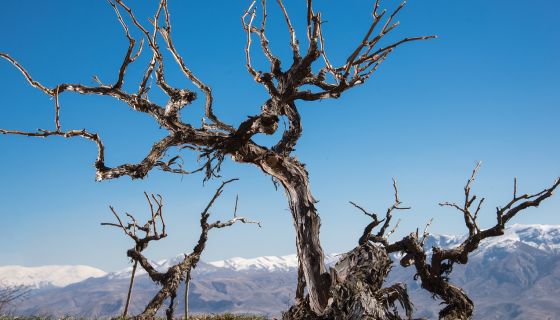"What have you done to us?" my lungs seemed to gasp as I set off on the Armenia trail half marathon from a little winery in the mountains called Zorah. I thought I was fit but we were 1400 metres high, and the air was distinctly thinner than I was used to. The race was going even higher, over 1600 metres, passing a little plot of grapevines that time forgot on its way. The altitude matters because it shows how far off the beaten track this vineyard is, perched up in the mountains, where there are few people apart from wandering shepherds. Up here, the vines were so remote they survived waves of politics in a region where politics and wine are never far from each other. They hung on through Stalin's programme of collectivisation of viticulture in the service of brandy that was the designated role for Armenia's vineyards. Later, in the mid 1980s they were too far away to be worth the effort of pulling out in the face of Gorbachev's anti-alcohol programme. The other factor that allowed these ancient vines to survive is absence of Phylloxera (the vine root louse that destroyed most of Europe’s vines in the 19th century), though no one quite knows why it failed to munch its way as far as Armenia's Highlands. Seriously cold, continental winters and very dry, warm summers may have been factors, though it may simply be luck that hasn't yet run out - as the louse is busy marching across the Ararat Valley not far away.
These venerable vines are an indigenous Armenian variety called Areni or Areni Noir. It’s been traced back to medieval vines from an abandoned monastery site, but may be much older, and has no identified parentage. And the lack of that pernicious Phylloxera meant that all anyone had to do to create more vines was to bury a shoot in the soil, so the plants may be centuries old. There are no ordered rows here, nor posts and wires, just higgledy-piggledy vines sprawling over and around rocks. When Zorik Gharibian (the owner of Zorah) wanted to buy these grapes and later the land itself, he sent out a couple of locals in rusty Ladas with envelopes of cash, to avoid alerting anyone to foreign interest, “The locals see me as dollar signs,” he says.
Altitude also came into the story when I went to climb the 5137 metre Mount Ararat with Zorik to launch the wine produced from these ancient vines. It's a rite of pilgrimage for Armenians to climb their spiritual mountain, even though it lies over the border in Turkey and it seemed the right place for Zorik to launch his dream wine. It is named Yeraz which means ‘dream’ as well as being his wife's name. A few drops of wine were sprinkled as a libation in the snow at the top of the mountain then we shared the rest of the bottle. There’s something about these pensioner vines that gives incredible depth and vivid complexity to the wine, along with lingering elegance and a gorgeous ethereal nose. Not quite like anything else, but if you think cru Burgundy mixed with a dash of top Sangiovese, it will guide you in the right direction.
No one knows how old these vines are, but I’d like to think they are channelling the spirit of Armenia’s 6000-year wine history. You can see the cliffs that hide the Areni-1 cave from the Yeraz vineyard. This karst cave is the location of the oldest winery ever discovered. It’s a spine-tingling place to visit, full of wine jars that look just a few decades old, not six millennia. The jars are surrounded by a rudimentary grape press and grave caskets, and there’s evidence of sacrifice too. Wine has clearly had a central role in human ritual for a very long time. It’s unlikely to have been the same vines, but maybe people were growing grapes in this remote spot even then.
Oh, and the race … I came second.
The photo above is provided by the winery with kind permission for us to use.













